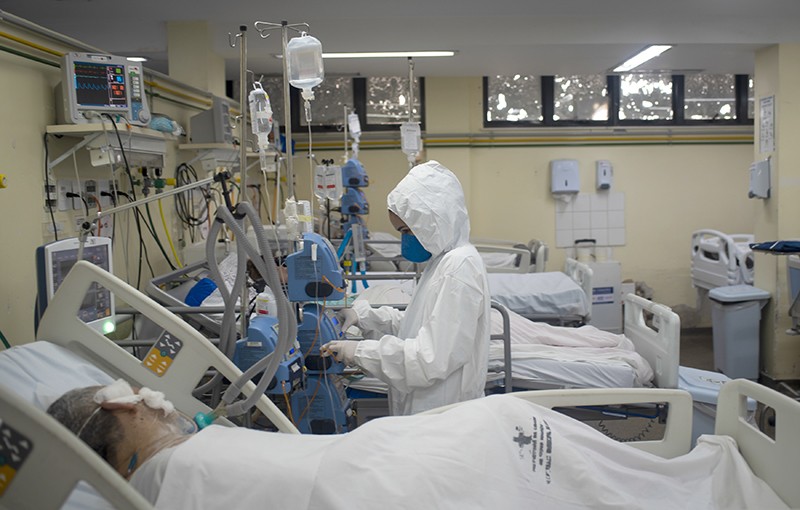The coronavirus variant behind Brazil’s ferocious second wave of COVID-19 emerged, in part, because of relaxed social distancing, according to an analysis of viral sequences from the outbreak’s epicentre.
In late 2020, researchers first spotted the P.1 variant — also called Gamma — in people who returned to Japan from Manaus, the capital of Brazil’s Amazonas state. Since P.1 emerged, scientists have found evidence that it is more transmissible than some other variants, and evades antibodies more easily. Infections caused by the variant overwhelmed Manaus, which had already experienced one of the world’s highest documented rates of SARS-CoV-2 infection in its first wave.
“What we saw was a collapse even harder than the one we had before, like something out of a horror movie. It’s hard to describe what happened in Manaus,” says Felipe Gomes Naveca, a virologist who co-led the Nature Medicine study1, and who works at the city’s Leônidas and Maria Deane research centre, part of the Oswaldo Cruz Foundation (Fiocruz) based in Rio de Janeiro.
To chart the rise of P.1, a team led by Gomes Naveca and Gonzalo Bello, a virologist at the Oswaldo Cruz Institute in Rio de Janeiro, another part of the Fiocruz foundation, sequenced the genomes of 250 SARS-CoV-2 samples collected from across Amazonas between March 2020 and January 2021, and conducted more limited genetic testing for P.1 on hundreds more samples.
The team’s analysis found that the prevalence of P.1 rose with breathtaking swiftness in Amazonas, the variant quickly replacing other circulating lineages. There was no sign of the variant in 355 samples from November 2020, but it accounted for nearly three-quarters of samples by mid-January 2021.
The rise of P.1 coincided with reduced social distancing in Manaus and the rest of Amazonas, the researchers found. This might have been linked to Christmas and New Year’s holidays, as well as to municipal elections in November. The researchers think that these potential super-spreading events, combined with the variant’s heightened transmissibility, helped P.1 to flourish.
In another study, posted as a preprint to the virological.org discussion forum last month2, the same team found that variants carrying many of the same worrying mutations as P.1 circulated in Amazonas for months, without catalysing a second wave. That finding has not yet been peer reviewed.
Bello suspects that these ‘P.1-like’ variants are also highly transmissible, but that it was periods of lax social distancing that caused P.1 to explode. “You need these mutations combined with epidemiological factors, then you have the perfect storm.”
Tulio de Oliveira, a bioinformatician and director of the KwaZulu-Natal Research Innovation and Sequencing Platform in Durban, South Africa, says that the research shows how teams in the global south can lead cutting-edge genomic epidemiology investigations. Tackling the pandemic, he notes, is helping local networks to flourish. “What we want to see in these papers going forward is that they can do this much more quickly.”

